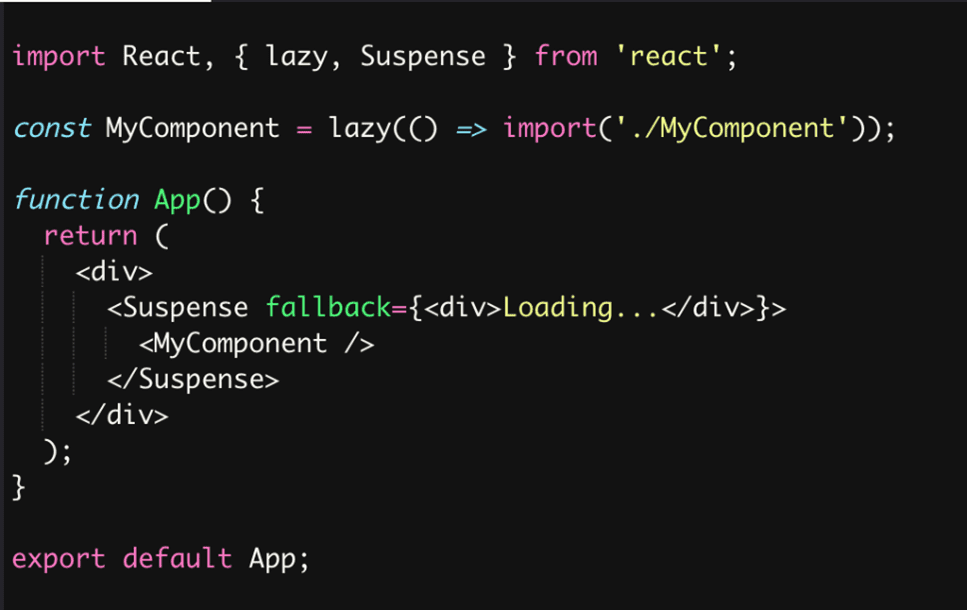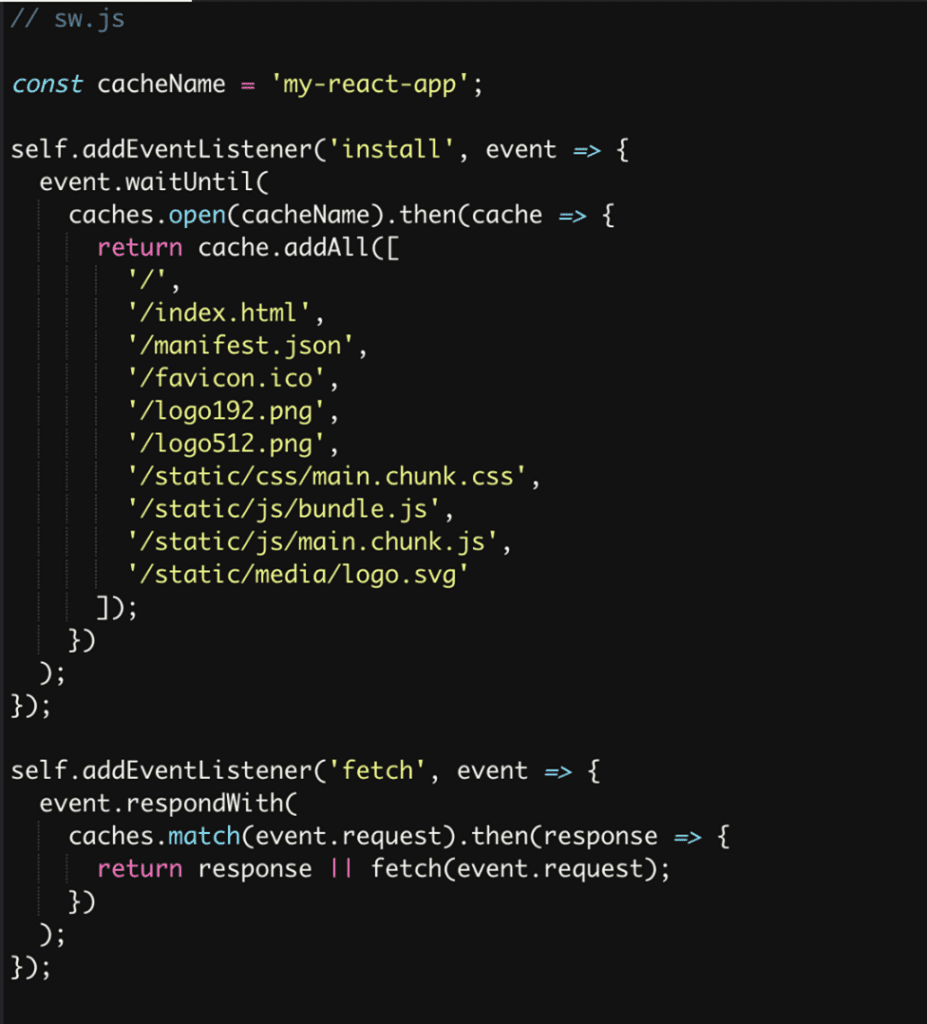- June 28, 2023
- Posted by: Praveen KJ
- Category: Application Engineering

Introduction
Progressive Web Apps (PWAs) are web applications that provide a user experience like that of native apps. They are designed to work on any device or platform and can be installed directly from a web browser without the need for an app store. PWAs are built using web technologies such as HTML, CSS, and JavaScript and have several advantages over traditional web apps, such as offline support, push notifications, and the ability to be added to the user’s home screen.
Why React.js is a good choice for PWAs
React.js is a popular JavaScript library for building user interfaces. It has gained popularity among developers for its performance, simplicity, and reusability. React.js is also a good choice for building PWAs, as it allows developers to create dynamic and responsive user interfaces, while also providing the necessary tools for building offline-first applications.
This blog post will examine PWA development using React.js. The advantages of using React.js for PWAs, best practices for constructing PWAs with React.js, and actual PWAs created with React.js will all be covered.
Benefits of React.js for PWAs
A. High performance
React.js is known for its performance optimisation. By using a virtual DOM (document object model), React.js minimizes the amount of time and resources required to update the user interface. This results in faster load times and smoother user interactions, making it an ideal choice for PWAs.
B. Reusability
React.js allows developers to create reusable components that can be used across multiple projects. This can save time and reduce the amount of code required to build a PWA, making development more efficient.
C. Components based Architecture
React.js is built around a component-based architecture, which makes it easy to manage complex UI components. This also makes it easier to update and maintain the codebase, reducing the likelihood of errors or bugs.
Complex UI components may be managed with ease thanks to React.js’s component-based architecture. Additionally, it is simpler to update and maintain the codebase as a result, which lowers the possibility of problems or errors.
D. Seamless integration with other tools and libraries
React.js can be easily integrated with other tools and libraries, such as Redux or GraphQL. This allows developers to build more complex PWAs with ease while also maintaining a clean and maintainable codebase.
E. Improved developer experience
React.js provides developers with a simplified syntax and intuitive API, which makes development faster and more enjoyable. Additionally, React.js has a large and active community, which means that developers have access to a wealth of resources, documentation, and support.
Best practices for building PWAs with React.js
A. Configuring webpack for PWA-specific requirements
Webpack is a popular module bundler used in React.js development. To build PWAs with React.js, webpack can be configured to meet PWA-specific requirements, such as code splitting, caching, and offline support.
B. Code splitting and lazy loading
Code splitting and lazy loading can improve the performance of a PWA by reducing the amount of code that needs to be loaded upfront. This can be achieved in React.js by using tools such as React.lazy and Suspense.
 (Code splitting example)
(Code splitting example)
C. Optimizing images and other assets
Optimizing images and other assets can improve the performance of a PWA by reducing the amount of data that needs to be downloaded. React.js provides several ways to optimize images and other assets, such as using the Webpack image loader or the React.lazy and Suspense APIs.
D. Implementing service workers and offline support
A crucial component of PWAs that enables them to operate offline or with subpar network connections are service workers. Service workers can be implemented in React.js using a variety of methods, including the Workbox library and the create-react-app utility.
 (Index.js file example)
(Index.js file example)
 (Service worker js file example)
(Service worker js file example)
Push notifications and background sync are two examples of PWA-specific functionality that can be implemented using React.js’s lifecycle methods. These techniques enable developers to build PWAs with seamless and interesting user interfaces.
However, by using browser APIs such as navigator.serviceWorker and window.Notification, we can implement PWA-specific features. By leveraging these APIs, developers can build PWAs that provide a native-like experience to users while also being fast, reliable, and accessible.
Also read: Enable Increased Revenue using Rapid Application Development
Real-world examples of PWAs built with React.js
A. Facebook’s mobile website
Facebook’s mobile website is a PWA built with React.js. It provides a native app-like experience with features such as push notifications and offline support.
B. Twitter Lite
Twitter Lite is another PWA built with React.js. It offers a fast and lightweight experience, with features such as caching and background sync.
C. Lyft PWA
Lyft’s PWA is built with React.js and offers a fast and responsive user experience, with features such as offline support and push notifications.
D. Pinterest PWA
Pinterest’s PWA is built with React.js and offers a seamless user experience with features such as caching and push notifications.
To Start building dynamic and high-performing Progressive Web Apps with React.js today!
Contact us
Conclusion
With React.js, building Progressive Web Apps (PWAs) becomes a breeze. Its high performance ensures that your apps run smoothly, providing a seamless user experience. The component-based architecture of React.js allows for reusability and modularity, enabling you to create complex PWAs with ease. Additionally, React.js integrates effortlessly with other tools and libraries, offering flexibility and expandability for your projects. Not only does React.js empower your PWAs with its technical advantages, but it also enhances the developer experience by providing a rich ecosystem and a supportive community. Start harnessing the power of React.js to unlock the full potential of your PWAs and deliver outstanding user experiences.
